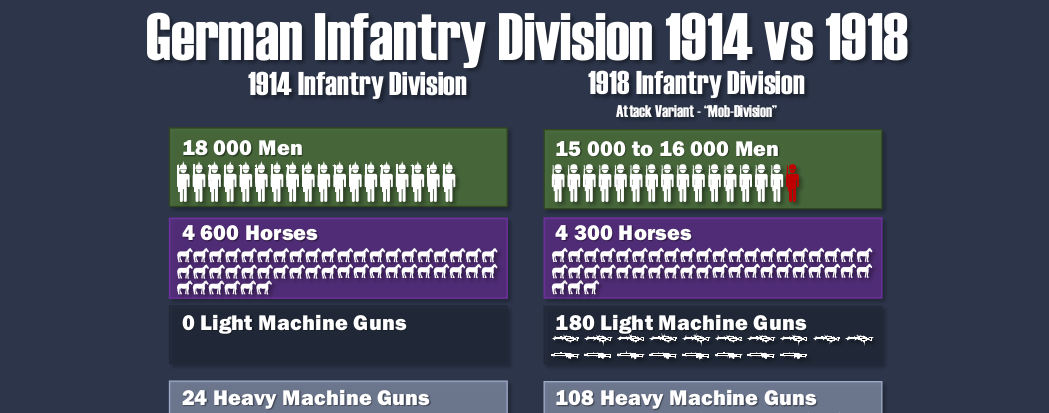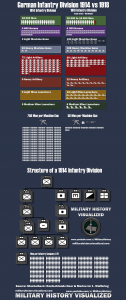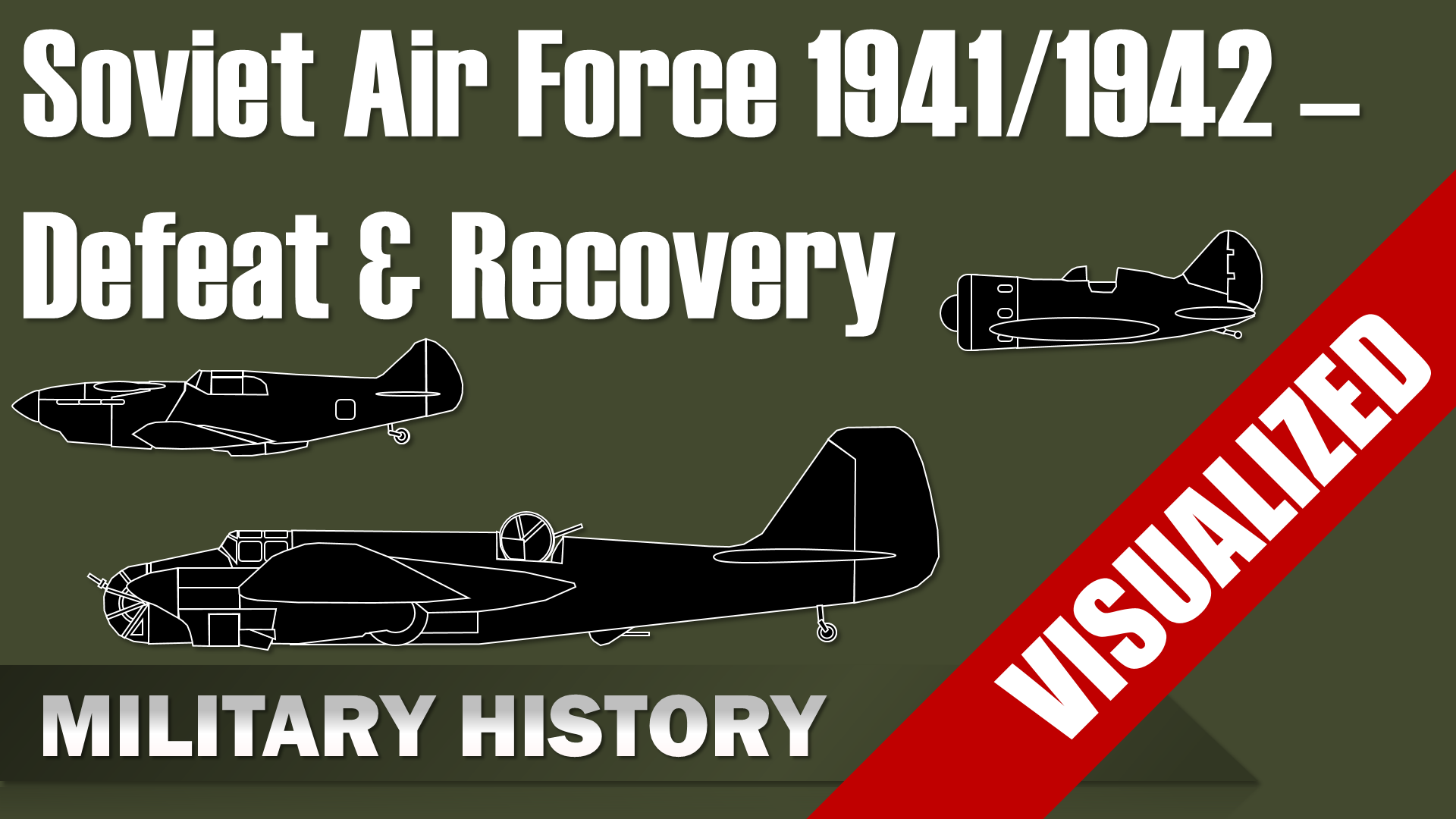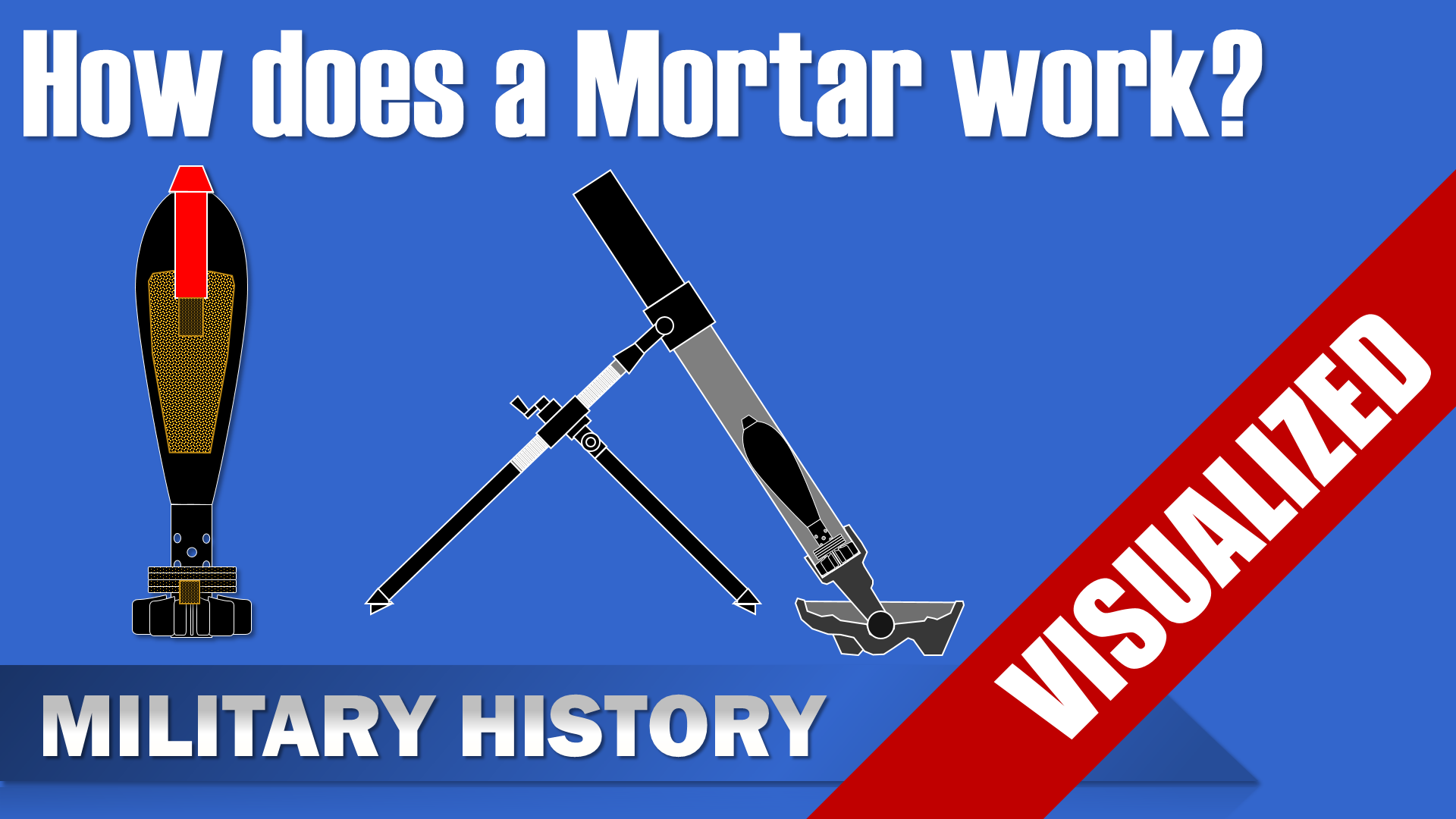Intro
The realities of Napoleonic infantry combat were very different from that of the World Wars and especially contemporary combat. This video takes a look at the weapons, basic principles and other important factors from that era. In order to provide a more relatable and vivid impression I will use references to modern weapons and combat.
Weapon Comparison
First off, the weapons, the infantry weapon of the Napoleonic era was the musket. Now a musket is not a rifle, a musket uses a smooth bore barrel, whereas a rifle has a barrel with spiraled groove, which is also called rifling. This spiral gives the projectile a spin that increases its stability and accuracy. Although the rifle is more accurate due to nature of its barrel it took longer to reload and was more complicated.
Now, the standard muskets at the Battle of Waterloo were usually muskets from the 18th century in slightly improved version. So let’s take a look at them and how they influenced combat and doctrine.
Muskets abilities and limits
The French Musket 1777 (improved 1801) usually called Charleville after the manufactory place (p. 50 Füssel) had a weight of 4.6 kg, a length of 1.53 without bayonet and a caliber of 17.7 mm (0.69 in).
The British used mostly the Land Musket, which is better known as the Brown Bess. Its weight was 4.8 kg with a length of 1.49 m and a caliber of 19.3 mm (0.75 in).
The Prussians had a newer musket yet in low numbers, I provide it mostly for reference, since the Prussian troops at Waterloo used a variety of looted weapons and the older Prussian Potsdam Musket (1723 / M1723/M1740).
The Prussian M1809 had a weight of 4kg, a length of 1.435 m and a caliber of 18.5 to 19 mm.
The muzzle velocities of all these muskets was around 300 m / second (1000 ft / second), but take this value with a grain of salt. (The weight of the musket balls was around 20 to 30 gram. Since the infantry carried around 50 to 60 shots, this meant about 1 to 2kg of extra weight.)
As you can see there is only a slight difference between these weapons, but let’s take a look at two more modern weapons. First the German standard rifle for the Second World War the Karabiner 98 kurz.
It had a weight of 3.9 kg, a length of 1.11m and a caliber of 7.92 mm with a muzzle velocity of 760 m/s. Second, a contemporary weapon the US M4 Carbine, it has a weight of 3.4 kg, with the stock extended is has a length of 0.756 m and a caliber of 5.56 mm. The muzzle velocity is 880 m / s ( 2900 ft / s).
The main differences are clear, the weapons got shorter and lighter. The muzzle velocity increased and the caliber decreased. Not really surprising, but let’s take a look how these changes affected the individual soldiers and the combat situations.
Weapons and their influence on combat
Weight and Length
First off, men in the Napoleonic era were usually smaller and had less weight, thus the weight of the gun in combination with the longer length had a more tiring effect than for a “modern infantry man”. A British male in the first half of the 19th century with an age of around 30, had an average weight of about 58.5 kg ( lbs). Thus the Brown Bess was about 8.2 % of his body weight. (British men, Birth Cohort: 1800-1819; Age 26-30; 58.50 (see Table 4) source )
The average German male in 2005 weighed 82.4 kg ( lbs), thus the Brown Bess would only be about 5.2 % of his body weight. This difference doesn’t seem much, but you need to take into account a prolonged engagement which usually followed after a longer period of marching or maneuvering. It all adds up, especially if you try to aim that weapon and hold it steadily. Furthermore, reloading in the Napoleonic era took several complicated steps that required to lower the weapon. Together, the physical strain on a Napoleonic soldier just for aiming, firing and reloading his weapon was far more tiring than for an infantry man in the World Wars or in a contemporary conflict. ( Source )
The difference in Muzzle Velocity and Caliber
Next, the difference in Muzzle velocity and Caliber resulted in different kinds of wounds. First off, the larger caliber meant that the damaged area was larger, also the projectile was a ball and not a shaped bullet. In combination with the increased muzzle velocity that means that modern bullets usually pass through their targets and most other stuff like wood and car doors, unless you are acting in a Hollywood movie. Quite contrary to a musket ball, which usually stuck when it hit its target. The combination of larger wounds, stuck projectiles and the poor state of medicine meant that limb damage often resulted in amputations and other wounds were usually deadly in one way or another.
Let’s take a look at the overall accuracy of the Muskets.
The firefights during the Napoleonic era were quite prolonged engagements and could take a few hours, yet the amount of causalities was quite low in comparison to modern firefights. This was due to the high inaccuracies of musket fire, which was a result of technical and other factors.
First, basically above the range of 150 m the chances of scoring a hit was extremely slim. (Bremm: p. 41) Various shooting tests were performed both against single targets or large targets that simulated an enemy formation. A Prussian shooting test in 1810 was performed against a target of 90 m length and 1.8 m height, which was the size of an enemy column. It resulted in a hit chance of 60 % at a range of 70 m. At 140 m it dropped to 40 % and at 210 m it dropped to 5 %. (Bremm: p. 43).
Yet, these test were usually performed under ideal conditions, since muskets had a far lower muzzle velocity than a bolt-action rifle from the World Wars, the bullet drop was more significant. Additionally, these musket were way more difficult to handle than modern weapons, which decreased their accuracy in combat significantly.
Scholars at that time did various calculations based on causality rates and other values and came to different opinions on the average hit chance:
Napier assumed only one out of 300 shots would hit, thus giving a hit chance of 0.3 %.
Guibert assumed 1 out of 500 shots with a chance of 0.2 %
At the battle of Vitoria the British needed around 800 rounds to inflict one casualty, thus giving a hit chance of 0.125 %. (Nosworthy: p. 204-205) These low hit rates were also due to the fact that units fired outside their effective range, thus severely decreasing the chance to hit. (p. 205)
Nevertheless, let’s compare the musket hit chance with that from the Battle of Vitoria. If we take the hit chance of 40 % at 140 m and the value from Vitoria with 0.125 % than the musket was 320 times less effective in combat. So let’s take a look at the reasons for this high discrepancy between theoretical and practical values.
Causes for difference between theoretical and practical values
Volley Fire vs. Aimed Fire
One factor was that regular line infantry didn’t use aimed fire regularly, unlike the various skirmisher units. Additionally, there was almost no training and even when training was performed it was done under ideal conditions that had little resemblance with the actual combat situation. (Nosworthy: p. 205-206)
Now, why wasn’t aimed fire used regularly? Because it was usually not feasible on the battlefield. The soldiers were confined to close formations that used concentrated and coordinated fire against the enemy. As Nosworthy notes: “ Aimed fire and volley fire were by their very nature mutually exclusive practices.” (Nosworthy: p. 206)
The combat situation at that time required regularly delivered and strictly controlled volleys. (Nosworthy: p. 206) This was not the time of individual soldiers shooting at individual soldiers. It was more like large groups of soldiers shooting at another large group of soldiers. This is also reflected by the previously mentioned Prussian shooting test that used a large area as target to reflect an enemy column.
Discipline, unit cohesion and coordination were crucial and way more rigid than in modern combat, as an example, an infantry formation attacked by cavalry needed to withhold its fire until a critical moment, else most of the shots were completely ineffective. (Nosworthy: p. 206-209) Although not really a historical accurate movie, such a situation can be seen in The Last Samurai, when the infantry fires too early at the enemy cavalry charge that comes out of the fog, thus inflicting almost no causalities.
Physics and not accounting for it
Another factor were physics, although bullet drop was known and there was a system to adjust the angle for various ranges. Usually this practice was not performed in combat situations, which is noted by officers from several armies. (Nosworthy: p.206-207) The reasons for this are many, first not all officers nor their men fully deemed leveling their musket necessary, second the main focus was on a high rate of fire and third correct leveling of muskets would have required proper training. (Nosworthy p. 207)
Chaos of Combat
The next factor was due to the very nature of combat in that time period. The effectiveness of fire decreased as soon as combat prolonged, Due to the confusion and disorder of a large group of men firing repeatedly. Which was very well described by General Mitchell:
“One man is priming; another coming to present; a third taking, what is called aim; a fourth ramming down his cartridge. After a few shots, the whole body are closely enveloped in smoke, and the enemy totally invisible;” (Nosworthy p. 209)
Thus, in a short amount of time the effectiveness of a unit would decrease significantly in enduring engagements. This also resulted in switching from volley fire to running fire, which was basically a disorganized voluntary fire. (Nosworthy: p. 208-209) Although this voluntary fire was usually aimed, the results were disappointing.: “Duhèsme was surprised to find that his battalion, firing at any enemy battalion one hundred paces [aprox. 76 m] away, was only able to inflict three or four casualties as the result of lengthy firefight.” (Nosworthy: p. 209) (NOTE: according to Glossary in Nosworthy: 1 pace = 30 “; that means 0.76 m)
Smoke, Dust and Fog
Next, as already noted smoke was a serious problem, this was due to the fact that in those days smokeless powder wasn’t invented. It was only a small annoyance for a single soldier, but for a large formation of infantry that was concentrated in a tight fashion and optimized to fire as much rounds as possible this was a serious problem, because the smoke quickly accumulated. According to reports from that time, this resulted in situation where even larger formations couldn’t be seen when more than 45 m (60 paces) away, some claim even 15 m (20 paces), but well that account was from a journalist. (Nosworthy: p. 210)
Reliability
Another major aspect that was the reliability of muskets. Since a musket was muzzle-loaded, heavy or continuous rain basically made it unusable. An example was the Battle at Katzbach, where rain prevented both sides from using musket fire. (Nosworthy: p. 213)
Furthermore, the flint (flintlock) (Feuerstein) became defunct after around 25 to 30 shots and thus needed to be replaced. Even under good conditions up to 20 % of all shots were misfires. (Bremm: p. 43)
Prolonged fire also could overheat the barrels, which could lead to igniting the powder to early, and as a result maim or kill the soldier. (Nosworthy: p. 216) Continuous fire of around 25 rounds would heat up the barrel that it couldn’t be held properly for reloading and it was required to hold it at the sling. (Nosworthy: p. 72-73) Also after around 8 minutes of continuous firing the barrels were too hot to continue. (Nosworthy p. 73) This of course reduced the rate of fire as a firefight prolonged.
Rate of Fire
Theoretical a rate of fire of 4 to 5 shots per minute was possible, but in reality it was closer to 2 or 3 shots per minute (Füssel: p. 50) Nosworthy notes that in the first minutes a veteran may achieve 5 shots per minute, but this would drop to around 3 shots per minutes rather soon.. Since firefights lasting for 3 hours were not unheard of. The average rate of fire was probably below 3 or 2 shots per minute. (Nosworthy p. 73)
Conclusion
From our perspective many practices during the Napoleonic Era may seem ineffective and often even suicidal, but taking a closer look reveals that due strong differences in technical equipment, training and the resulting necessities of combat that these approaches were probably the most effective available at the time to deliver as much firepower as possible. I hope this video gave you a better understanding of that era of Military History and can serve as a foundation for upcoming videos.
Sources
Books
Nosworthy, Brent: Battle Tactics of Napoleon and his Enemies (amazon.com affiliate link)
Füssel, Marian: Waterloo 1815 (amazon.de affiliate link)
Bremm, Klaus-Jürgen: Die Schlacht – Waterloo 1815 (amazon.de affiliate link)
| amazon.com | amazon.co.uk | amazon.ca | amazon.de |
Disclaimer amazon.com
Bernhard Kast is a participant in the Amazon Services LLC Associates Program, an affiliate advertising program designed to provide a means for sites to earn advertising fees by advertising and linking to amazon.com.
Disclaimer amazon.co.uk
Bernhard Kast is a participant in the Amazon EU Associates Programme, an affiliate advertising programme designed to provide a means for sites to earn advertising fees by advertising and linking to Amazon.co.uk.
Disclaimer amazon.ca
Bernhard Kast is a participant in the Amazon.com.ca, Inc. Associates Program, an affiliate advertising program designed to provide a means for sites to earn advertising fees by advertising and linking to Amazon.ca.
Disclaimer amazon.de
Bernhard Kast ist Teilnehmer des Partnerprogramms von Amazon Europe S.à.r.l. und Partner des Werbeprogramms, das zur Bereitstellung eines Mediums für Websites konzipiert wurde, mittels dessen durch die Platzierung von Werbeanzeigen und Links zu amazon.de Werbekostenerstattung verdient werden können.
Online Resources
Demographic Data – 18th Century
Infantry Tactics and Combat during the Napoleonic Wars.
Karabiner 98 Kurz (not wikipedia because the weight there is a joke)
![[Waterloo] Napoleonic Era Infantry Combat vs. Modern Combat](http://militaryhistoryvisualized.com/wp-content/uploads/2016/04/waterloo_napoleonic_era_combat_vs_modern_combat.png)









